Within the Zohar’s commentary on this week’s parasha, Ha’azinu, is the treatise known as the Idra Zuta. This text describes the well-known narrative of the passing of Rabbi Shimon bar Yochai, and includes his very last discourse to his students. It is one of the most profound and penetrating teachings in the Zohar. It isn’t a coincidence that it was wedged within Ha’azinu, which our Sages similarly described as the deepest and most cryptic parasha of the Torah. A significant part of the Idra Zuta concerns matters of light and vision. Incredibly, the Zohar describes things that scientists only uncovered centuries later. In fact, one of these famous scientists may have used the Zohar as the inspiration for his discovery!
Primary Colours of Light
The Zohar explains that there are four fundamental colours in Creation: red, green, black, and white. One might recognize these colours because they are also the colours of the classical four humours, the main liquids in the human body: Red is blood, green (or yellow) is bile, black is “melancholy” (associated with the fluid of the kidneys and spleen), and white is phlegm. In ancient times, medicine was heavily based on the four humours, and illnesses were often thought to be imbalances of the humours in the body. Having said that, the Zohar here is not talking about the four humours at all. Rather, the Zohar is talking about light and the roots of colour.
The Zohar says the following: “These colours mix with one another”—to produce new colours—“except for white, which includes all of them within it.” (Zohar III, 293b, Idra Zuta) The Zohar tells us that white light contains all the other colours within it. Moreover, the Zohar is revealing that all the colours can be generated by the mixing of the other three. Today, of course, we know that the primary colours (of light, not paint) are red, green, and blue (often abbreviated RGB) which generate a whole array of colours. These are used in our electronic devices. Your LCD screen, for example, probably has red, green, and blue crystals that combine to generate the intricate image you see.
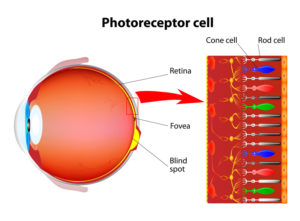 Your eyes work the same way. The retina at the back of the eye which receives light has four types of photoreceptors: the rods which sense white light, and three types of cones—red, green, and blue. The wonderful image that you see is generated by 125 million rods and cones in each eye working together, and sending signals to the brain for further visual processing. Incredibly, the Zohar knew this, too.
Your eyes work the same way. The retina at the back of the eye which receives light has four types of photoreceptors: the rods which sense white light, and three types of cones—red, green, and blue. The wonderful image that you see is generated by 125 million rods and cones in each eye working together, and sending signals to the brain for further visual processing. Incredibly, the Zohar knew this, too.
Eye Cells and Tefillin
On the same page, the Zohar says that the eyes are able to see through four structures that correspond to the four main colours (white, red, green, black). Moreover, these four structures correspond to the four compartments of the head tefillin. Just as the four photoreceptors in the eyes allow us to see the physical world around us, the four compartments in the head tefillin (that we place “between the eyes”) help us see the spiritual world around us! This is one of the secret reasons why the head tefillin has four compartments while the arm tefillin only has one.
Now, you are probably wondering why the Zohar says “black” instead of blue. To understand this, we need to dispel some linguistic misconceptions. The Zohar is written in Aramaic and uses the corresponding word for the Hebrew shachor, generally thought to mean “black”. However, shachor does not actually mean “black” in the Tanakh. The letters (שחר) usually refer to something dark, though not black, as in the dark hair of Leviticus 13 or the darkened, sun-tanned skin of the protagonist in Shir HaShirim. The word for actual pitch blackness in the Torah is afel, as in the pitch blackness of the ninth plague in Egypt (Exodus 10:22).
Conversely, the most common occurrence of שחר is in reference to “morning” or “dawn”, like shacharit, the name for the morning prayer. This is the time when the sky is no longer black, though still dark. In fact, it is when the sky is a dark blue. Thus, when the Zohar speaks of the three primary colours as red, green, and “black”, it is literally just saying red, green, and “dark” (blue being the darkest of the primary colours, and furthest-right on the spectrum). In any case, the Zohar’s understanding of the eye’s inner-workings on a cellular level is astounding.
Surprisingly, with minor exceptions the word “blue” doesn’t appear in any ancient languages or texts! In nearly all ancient cultures and writings, we find “black” used for what we would consider “blue”, as explained eloquently in the following video:
Isaac Newton’s Prism
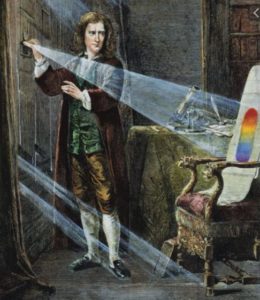 Back in the 17th century, famed physicist, mathematician, and natural philosopher Isaac Newton (1642-1727) performed an experiment using a prism to show how white light splits into all the colours of the rainbow. It is said that Newton may have gotten the idea from René Descartes (1596-1650). However, there is another possibility.
Back in the 17th century, famed physicist, mathematician, and natural philosopher Isaac Newton (1642-1727) performed an experiment using a prism to show how white light splits into all the colours of the rainbow. It is said that Newton may have gotten the idea from René Descartes (1596-1650). However, there is another possibility.
Today, Isaac Newton is most famous for his scientific and mathematical achievements, and in 2005 was voted by The Royal Society as the greatest scientist of all time (Albert Einstein came in second). Yet, when his journals and diaries were re-discovered, it was found that more than half were devoted to spiritual and religious matters! Newton wrote an entire commentary on Genesis and on the Book of Daniel. He had rejected the Christian notion of the Trinity and, while accepting that Jesus was a “son of God”, thought worshipping Jesus was total idolatry. It has been proposed by a number of scholars that Newton was also a mystic, and perhaps a “Kabbalist” of some sort. We know for a fact that he was very familiar with Jewish teachings, cites the Mishnah and the Rambam in his writings, and possessed a copy of a Latin translation of the Zohar.
This Latin text was called Kabbalah Denudata. It was first published by Newton’s contemporary, Christian Knorr von Rosenroth (1636-1689) around 1677. It contained major chunks of the Zohar and the teachings of the great Arizal (Rabbi Isaac Luria, 1534-1572). Von Rosenroth subsequently published several more volumes of Kabbalah Denudata. In the first publication, he included a translation of the Idra Zuta, the discourse which we have discussed here that speaks of white light containing all the colours within it.
And so, some have proposed that, perhaps, Newton got the idea for his experiment from the Zohar! (I first came across this suggestion in Michael Berg’s The Secret History of the Zohar, pg. 72.) Although the prism experiment has been dated to 1666, and Kabbalah Denudata was not published until 1677, it is still possible that Newton had studied the Zohar before-hand. We certainly know that he corresponded with, and was partly influenced by, a “Christian Kabbalist” named Henry More (1614-1687).
Others have argued the other way, saying that Newton was anti-Kabbalah. One of Newton’s colleagues was Gottfried Wilhelm Leibniz (1646-1716). The two were big competitors, and both Newton and Leibniz are credited with independently inventing/developing calculus. When Leibniz became fascinated with the Sefirot and started incorporating Kabbalistic teachings into his philosophy, Newton was inspired to catch up and study Kabbalah, too. Ultimately, he felt Kabbalah was not a pure iteration of monotheism either, and sought to counter its spread. John Maynard Keynes concluded that Newton was really “a Judaic monotheist of the school of Maimonides.” Garry W. Trompf, meanwhile, writes that for Newton, “Israel preserved the truth about the origins of religion, knowledge and cultural achievement; Israel produced the first great efflorescence of civilization…”
Four Humours in Ha’azinu
Bringing it back to this week’s most-cryptic parasha, I believe we can find an allusion to the four colours, four photoreceptors, and four humours in one of its mysterious verses. After telling us that God formed His people like the “pupil of His eye”, we read that God blessed us with “Cattle curd and milk of sheep; fat of lambs and rams of the Bashan breed, as well as he-goats with the kidney-fat of wheat, and blood of grapes to drink wine.” (Deuteronomy 32:14) The words are perplexing.
What is a wheat’s “kidney-fat”? Why be so poetic in saying the “blood” of grapes? We find in the verse that the same word chalav or chelev (חלב), “milk” or “fat”, appears three times, followed by the word for “blood”. Altogether, then, four bodily fluids are mentioned. Blood is the red humour and “kidney fat” is melancholy—the “dark” humour associated with the kidneys. The “milk of sheep” is white humour, and the remaining “fat of lambs” corresponds to green bile.
Lastly, the parasha begins with Moses calling on Heaven and Earth to bear witness as he seals the Covenant with Israel on his last day. The verse that follows brings in imagery of strong rains and storms. Together, the opening verses hearken back to the Great Flood at the time of Noah, when God made His first covenant with mankind. At that moment, God presented the rainbow as an eternal sign of the covenant. On a mystical level, the seven colours of the rainbow are supposed to remind mankind of the Seven Noahide Laws which formed that first covenant. As our parasha describes, it was mankind’s failure to uphold those laws which led God to select Israel for a unique task, forming a second covenant, specifically with His people.
One of those Seven Laws which mankind failed to uphold is the prohibition of idolatry. It is interesting that Isaac Newton—who revealed the science behind the seven colours of the rainbow—saw himself as a modern-day Noah trying to save a world drowning in idolatry. Another prohibition within the Seven Noahide Laws is that of sexual immorality, making it all the more ironic when we consider what the rainbow has become associated with today. It is fitting to conclude with one more teaching from the Zohar (I, 72b and Tikkunei Zohar 18), which prophesies: “Do not anticipate the coming of Mashiach until you see the shining colours of the rainbow.”
Shabbat Shalom and Gmar Hatima Tova!

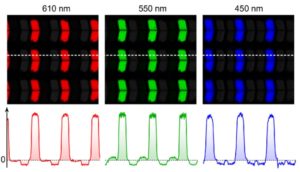
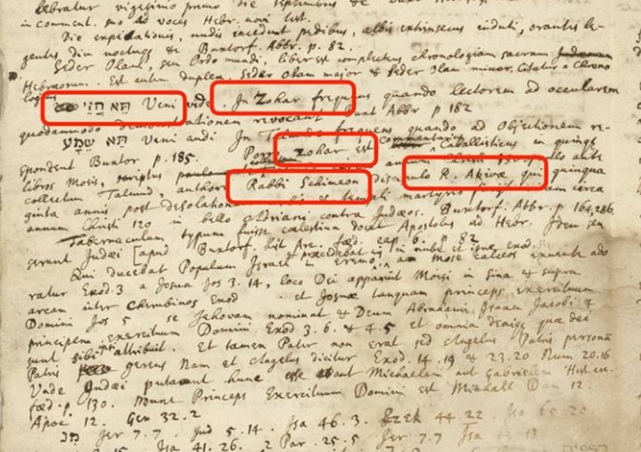
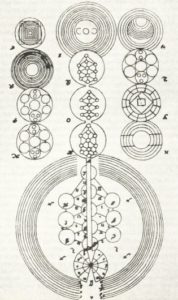
Pingback: Colours of the Sefirot | Mayim Achronim